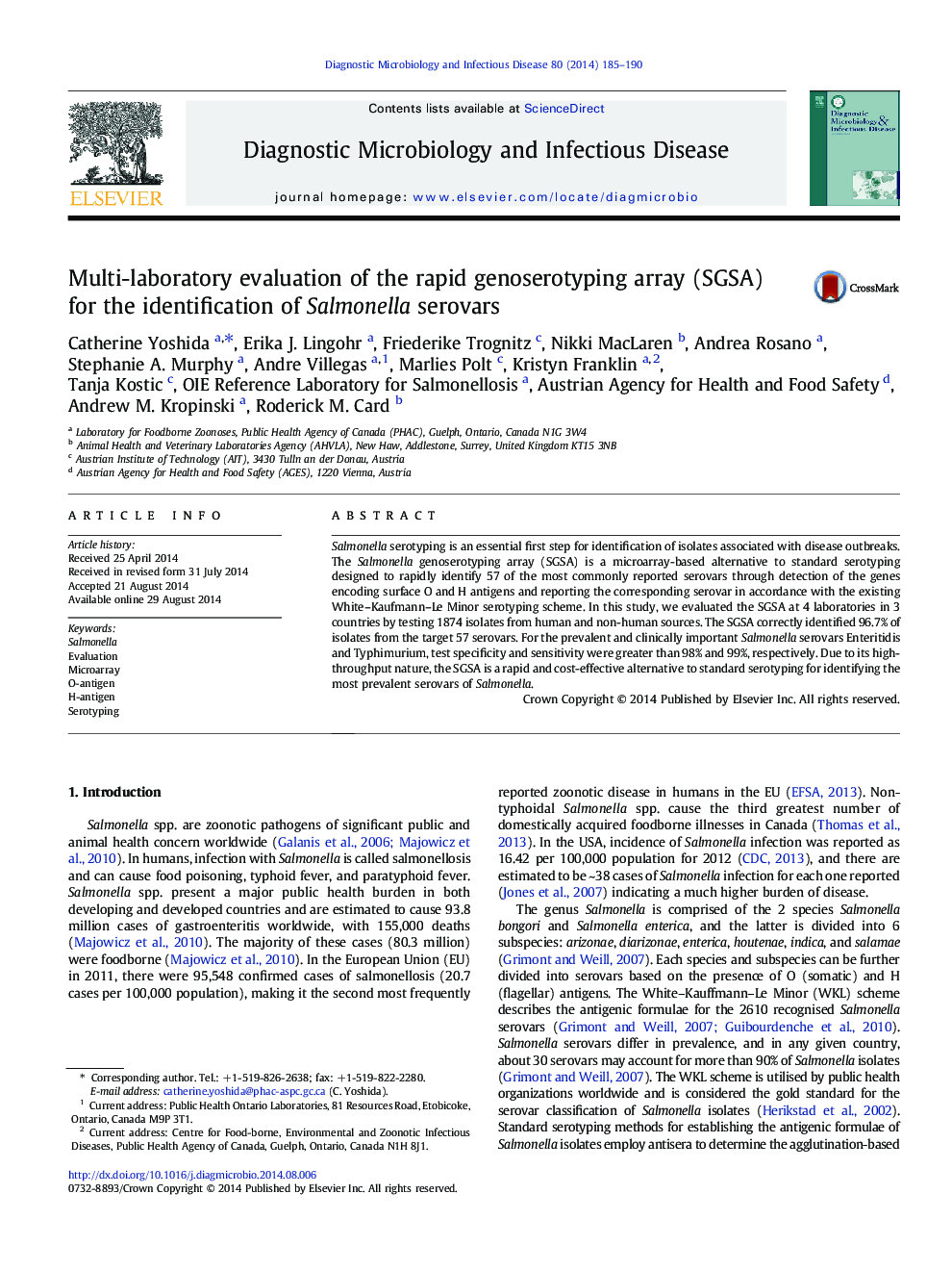| کد مقاله | کد نشریه | سال انتشار | مقاله انگلیسی | نسخه تمام متن |
|---|---|---|---|---|
| 3346969 | 1215925 | 2014 | 6 صفحه PDF | دانلود رایگان |

• The SGSA Salmonella serotyping assay targets 57 clinically important serovars.
• The performance of the SGSA was evaluated with 1874 Salmonella isolates.
• 96.7% of the isolates of target serovars were correctly identified.
• Specificity and sensitivity of the assay were high (>98 and 99%, respectively).
• The SGSA is an efficient, high-throughput alternative to standard serotyping.
Salmonella serotyping is an essential first step for identification of isolates associated with disease outbreaks. The Salmonella genoserotyping array (SGSA) is a microarray-based alternative to standard serotyping designed to rapidly identify 57 of the most commonly reported serovars through detection of the genes encoding surface O and H antigens and reporting the corresponding serovar in accordance with the existing White–Kaufmann–Le Minor serotyping scheme. In this study, we evaluated the SGSA at 4 laboratories in 3 countries by testing 1874 isolates from human and non-human sources. The SGSA correctly identified 96.7% of isolates from the target 57 serovars. For the prevalent and clinically important Salmonella serovars Enteritidis and Typhimurium, test specificity and sensitivity were greater than 98% and 99%, respectively. Due to its high-throughput nature, the SGSA is a rapid and cost-effective alternative to standard serotyping for identifying the most prevalent serovars of Salmonella.
Journal: Diagnostic Microbiology and Infectious Disease - Volume 80, Issue 3, November 2014, Pages 185–190